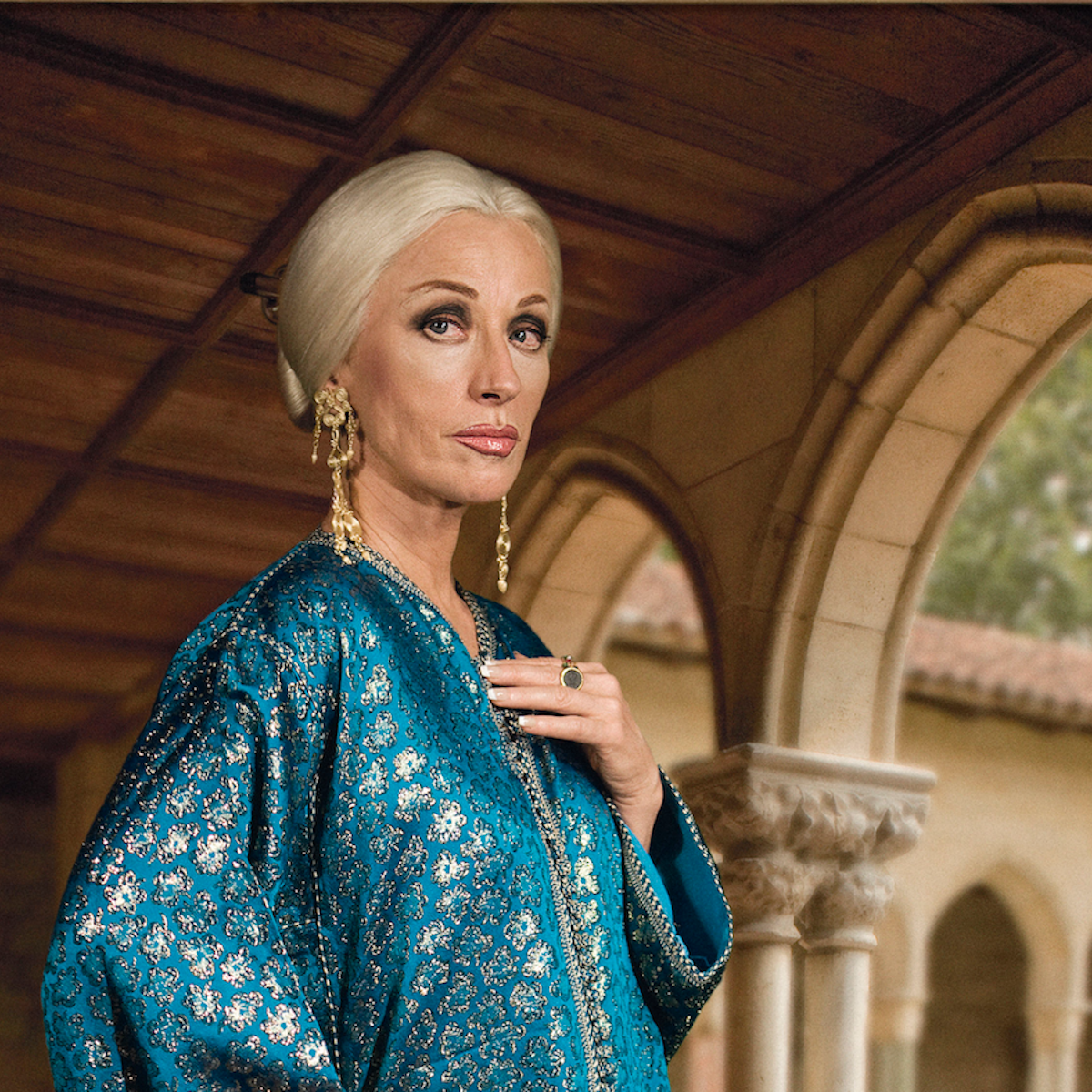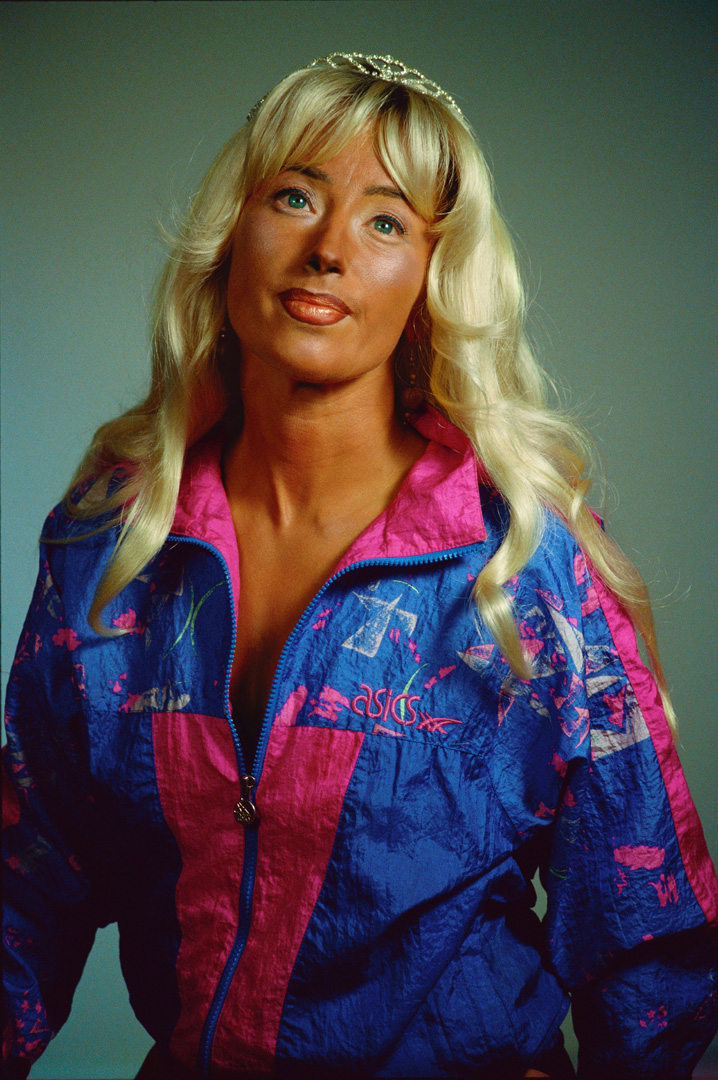Cindy Sherman
Posted By admin On 17/07/22American, born 1954 89 works online For four decades, Cindy Sherman has probed the construction of identity, playing with the visual and cultural codes of. This too is the image of the world created by Cindy Sherman in her History portraits series. These photographs, shown initially as a group at Metro Pictures Gallery in New York City in 1990, present chaotic scenes in which images from art-history catalogues clash and mix. The woman pictured here is Cindy Sherman, but as is always the case with the artist’s photographs of herself, Untitled is not a self-portrait. Instead, Sherman has used clothing and cosmetics to remodel herself as a society grande dame, one whose world-weary gaze, pasty makeup, and imperious yet hesitant pose suggest that she knows her best days are behind her.
Summary of Cindy Sherman
Cindy Sherman is a contemporary master of socially critical photography. She is a key figure of the 'Pictures Generation,' a loose circle of American artists who came to artistic maturity and critical recognition during the early 1980s, a period notable for the rapid and widespread proliferation of mass media imagery. At first painting in a super-realist style in art school during the aftermath of American , Sherman turned to photography toward the end of the 1970s in order to explore a wide range of common female social roles, or personas. Sherman sought to call into question the seductive and often oppressive influence of mass-media over our individual and collective identities. Turning the camera on herself in a game of extended role playing of fantasy Hollywood, fashion, mass advertising, and 'girl-next-door' roles and poses, Sherman ultimately called her audience's attention to the powerful machinery and make-up that lay behind the countless images circulating in an incessantly public, 'plugged in' culture. Sexual desire and domination, the fashioning of self identity as mass deception, these are among the unsettling subjects lying behind Sherman's extensive series of self-portraiture in various guises. Sherman's work is central in the era of intense consumerism and image proliferation at the close of the 20th century.
Accomplishments
- Recalling a long tradition of self-portraiture and theatrical role-playing in art, Sherman utilizes the camera and the various tools of the everyday cinema, such as makeup, costumes, and stage scenery, to recreate common illusions, or iconic 'snapshots,' that signify various concepts of public celebrity, self confidence, sexual adventure, entertainment, and other socially sanctioned, existential conditions. As though they constituted only a first premise, however, these images promptly begin to unravel in various ways that suggest how self identity is often an unstable compromise between social dictates and personal intention.
- Sherman's photographic portraiture is both intensely grounded in the present while it extends long traditions in art that force the audience to reconsider common stereotypes and cultural assumptions, among the latter political satire, caricature, the graphic novel, pulp fiction, stand-up comedy (some of her characters are indeed uncomfortably 'funny'), and other socially critical disciplines.
- Sherman's many variations on the methods of self-portraiture share a single, notable feature: in the vast majority of her portraits she directly confronts the viewer's gaze, no less in the case of posed sex dolls, as though to suggest that an underlying penchant for deception is perhaps the only 'value' that truly unites us.
- Long assumed to be a medium that 'mirrors' reality with precision, photography in Sherman's hands simultaneously constructs and critiques its apparent subject. In this sense, Sherman's unique form of portrait photography functions, in part, as a sign for the subjective nature of all human intelligence and the unstable nature of visual perception.

Biography of Cindy Sherman
Talking about her self-portraits, Cindy Sherman described how, as the youngest child and “total latecomer” in her family, she often dressed up to occupy herself, wondering, 'If you don’t like me this way, how about you like me this way? Or maybe you like this version of me.'
Cindy Sherman Untitled Film Stills

It could be said that a woman who is bored of Cindy Sherman is bored of life. The American photographer turned 67 this week, and she is still as active as ever. Her latest exhibition in Berlin at Sprueth Magers (currently closed under Germany’s lockdown restrictions) is a testament to her unending inventiveness. On show are new works that simultaneously address androgyny and touch on internationalism. This image, Untitled #615, created in 2019 and originally presented at Metro Pictures exhibition in New York, sees Sherman move in a new direction to explore outside of her usual spectrum.
Many artists are as prolific as Sherman but few manage to come up with so many new ideas while remaining firmly within the same strict rubric. Sherman has hardly deviated from the framework she started out with in the early 1970s aged 22, dressing up as characters drawn from anything she sees around her and taking staged portraits of them. Some of those early works include her 1976 Bus Riders series, based on people she observed on buses, with several in which she wears blackface. They were called out as racist after they were shown in 2005 and in 2015 re-emerged as #Cindygate; Sherman doesn’t appear to have publicly responded. These images remain an ugly part of her past that needs to be acknowledged.
It also points to the issue with representation and responsibility in contemporary art, something Sherman has continued to push to the limits (although she thankfully never wore blackface again). She sticks closer to her own experience in a cast of white, female characters to examine issues around class, sexuality and gender, referencing contemporary visual culture but creating warped archetypes that are entirely her own. Though she has continued to produce, Sherman has always remained distant as an artist, and her work is enshrouded in enigma; no doubt one of the reasons it keeps viewers coming back for more. She never gives images titles, instead keeping the viewer frustrated and thirsty. The ambiguity in Sherman’s work is what makes it so uncomfortable—whether she is empathetic or mocking, both or neither, is never clear. This is what makes Sherman a great artist, but it is also what makes her work potentially problematic and even dangerous in its appropriation and assumption of identities.


This image is one of ten large-scale pictures in this series in which Sherman steps away from her comfort zone; the subject ostensibly here is masculinity, and it is the first time Sherman has dedicated an entire series to subjects that read as men. The pose, the seated spread-legs, the suggestion of cocksure confidence in the hand draped over the thigh with the other in the pocket—these studies of posturing reveal how gender might affect the way we move and negotiate space. The digitally rendered effect of the triple exposure on the figure both emphasises and undoes any surety about what we’re seeing, like a psychedelic hallucination.
Looking at various drag queens on Instagram, Sherman learned new tricks for make-up, such as contouring techniques and eyebrows combed down with Elmer’s Glue, while the clothes come from Stella McCartney’s Spring 2017 menswear collection, including this flamboyant bomber jacket and short set with matching bucket hat; the knee-high socks suggest a younger person. She plays with these layers of queering, while the background is a mash-up of landscape pictures Sherman took on trips through Bavaria, England and Shanghai. This digitally-rendered non-place echoes the pattern on McCartney’s clothing, motifs that hint at the male explorer, a solitary figure setting out to dominate the terrain.
Cindy Sherman Untitled Film Stills
But of course, all our suppositions are only based on the superficial: with Sherman it’s all about the surface, and our individual reactions to that veneer.